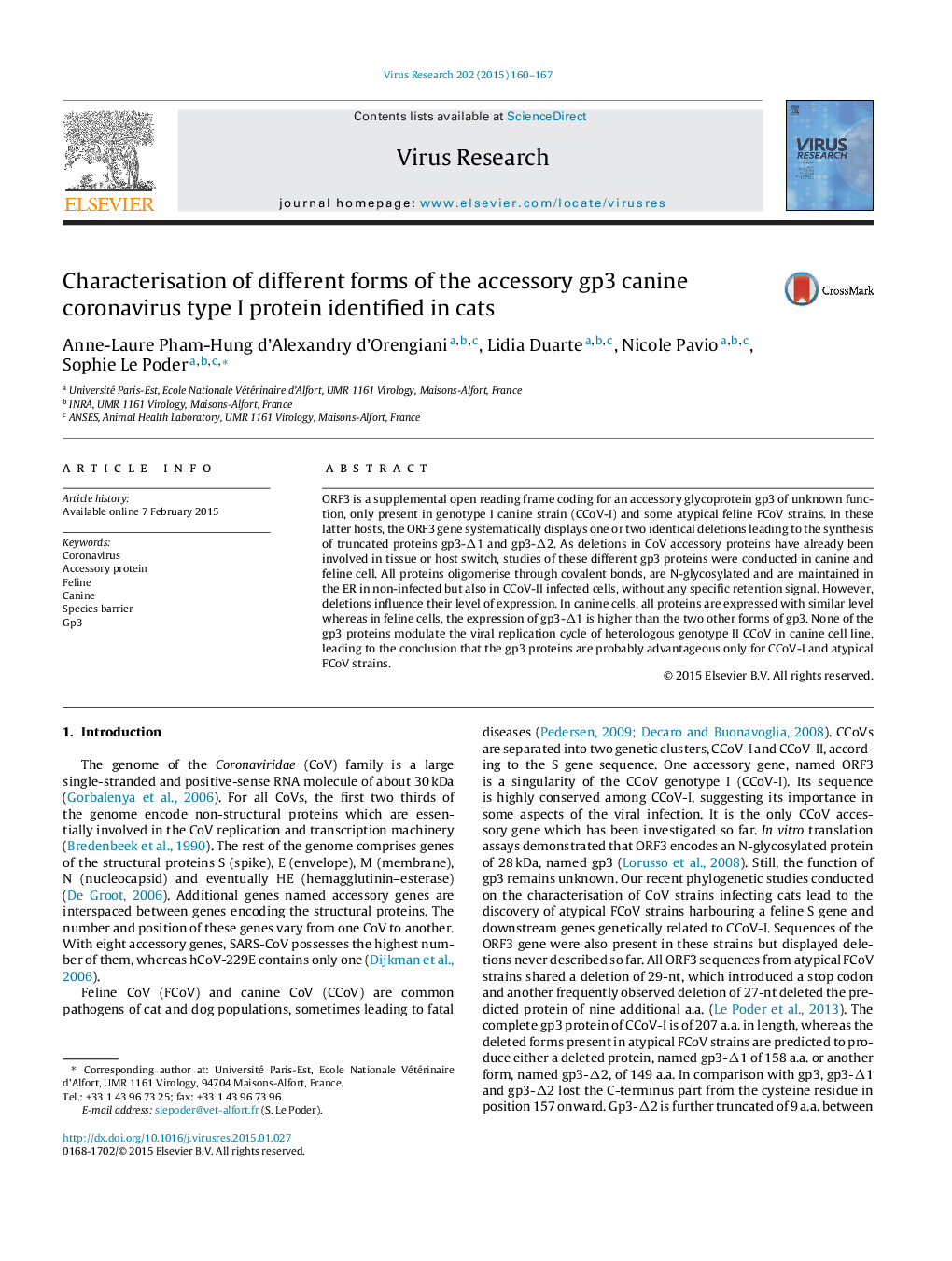| Article ID | Journal | Published Year | Pages | File Type |
|---|---|---|---|---|
| 3428223 | Virus Research | 2015 | 8 Pages |
•Accessory proteins of coronaviruses play a role in virus adaptation to a new host.•Some FCoV harbour truncated gp3 proteins, an accessory protein peculiar of CCoV-I.•Deletions of gp3 do not influence their basic features.•Deletions impact the expression proteins levels in feline but not in canine cells.•All proteins localise in the ER despite the absence of a specific retention signal.
ORF3 is a supplemental open reading frame coding for an accessory glycoprotein gp3 of unknown function, only present in genotype I canine strain (CCoV-I) and some atypical feline FCoV strains. In these latter hosts, the ORF3 gene systematically displays one or two identical deletions leading to the synthesis of truncated proteins gp3-Δ1 and gp3-Δ2. As deletions in CoV accessory proteins have already been involved in tissue or host switch, studies of these different gp3 proteins were conducted in canine and feline cell. All proteins oligomerise through covalent bonds, are N-glycosylated and are maintained in the ER in non-infected but also in CCoV-II infected cells, without any specific retention signal. However, deletions influence their level of expression. In canine cells, all proteins are expressed with similar level whereas in feline cells, the expression of gp3-Δ1 is higher than the two other forms of gp3. None of the gp3 proteins modulate the viral replication cycle of heterologous genotype II CCoV in canine cell line, leading to the conclusion that the gp3 proteins are probably advantageous only for CCoV-I and atypical FCoV strains.
